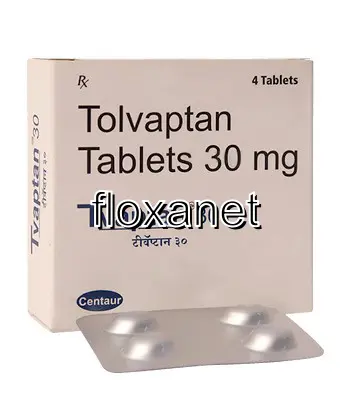| Package | Dosage | Price | Price per Dose | |
|---|---|---|---|---|
| Dosage: 15mg | ||||
| 180 pill | 15mg | CAD2,041.06 | CAD11.34 | |
| 120 pill | 15mg | CAD1,383.76 | CAD11.53 | |
| 90 pill | 15mg | CAD1,055.12 | CAD11.72 | |
| 60 pill | 15mg | CAD714.94 | CAD11.92 | |
| 30 pill | 15mg | CAD363.22 | CAD12.11 | |
| 20 pill | 15mg | CAD245.99 | CAD12.30 | |
| 10 pill | 15mg | CAD124.91 | CAD12.49 | |
| Dosage: 30mg | ||||
| 120 pill | 30mg | CAD1,802.74 | CAD15.03 | |
| 90 pill | 30mg | CAD1,376.08 | CAD15.30 | |
| 60 pill | 30mg | CAD934.03 | CAD15.57 | |
| 30 pill | 30mg | CAD470.85 | CAD15.70 | |
| 20 pill | 30mg | CAD317.10 | CAD15.86 | |
| 10 pill | 30mg | CAD159.50 | CAD15.95 | |

Tolvaptan Description
Overview of Tolvaptan
Tolvaptan is a medication primarily used to treat specific medical conditions related to water balance in the body. It belongs to a class of drugs known as vasopressin receptor antagonists. This medication works by blocking the action of vasopressin, also called antidiuretic hormone, which helps the kidneys control the amount of water in the body. By antagonizing vasopressin receptors, Tolvaptan promotes the excretion of free water, leading to a reduction in fluid retention and dilution of body fluids. This medication is often prescribed to patients with conditions that cause the body to retain excessive amounts of water, such as certain forms of hyponatremia and polycystic kidney disease.
Uses and Indications
The primary use of Tolvaptan is in treating euvolemic and hypervolemic hyponatremia caused by conditions such as syndrome of inappropriate antidiuretic hormone secretion (SIADH), heart failure, or liver cirrhosis. It can effectively increase serum sodium levels in patients with low sodium concentrations, which is crucial to prevent severe symptoms like confusion, seizures, or coma. In addition, Tolvaptan is FDA-approved for the management of autosomal dominant polycystic kidney disease (ADPKD), a genetic disorder characterized by the growth of numerous cysts in the kidneys. By slowing cyst growth and preserving kidney function, Tolvaptan can delay disease progression and improve patient outcomes.
Mechanism of Action
Tolvaptan selectively targets V2 receptors located in the kidneys' collecting ducts. When these receptors are blocked, the kidney's ability to concentrate urine diminishes, resulting in increased water excretion. Unlike diuretics that remove electrolytes and water, Tolvaptan primarily causes free water loss. This specific action helps correct hyponatremia without significantly altering electrolyte balance. Due to its mechanism, careful monitoring of sodium levels is essential during treatment to avoid rapid increases that could lead to neurological complications.
Potential Benefits
Patients taking Tolvaptan often experience improved symptoms associated with fluid overload, like swelling, shortness of breath, and weight gain. For those with hyponatremia, the medication offers a targeted approach to restore normal sodium levels safely. In cases of ADPKD, it can slow cyst development, which might translate into better kidney function and delay the need for dialysis or transplantation. Additionally, the convenience of oral administration makes Tolvaptan an attractive treatment option for long-term management of these conditions.
Possible Side Effects
While Tolvaptan can be very effective, it also carries a risk of side effects. Common adverse reactions include thirst, dry mouth, and increased urination, which are expected due to its mechanism of promoting water excretion. More serious but less frequent side effects could involve liver injury, with some patients experiencing elevations in liver enzymes or signs of hepatotoxicity. Therefore, regular liver function monitoring is recommended during therapy. Other adverse effects might include headache, fatigue, and gastrointestinal symptoms like nausea or diarrhea. It's essential for patients to report any unusual symptoms promptly to their healthcare provider.
Precautions and Considerations
Prior to starting Tolvaptan, patients should undergo a thorough medical evaluation. It is particularly important to assess baseline liver function, kidney function, and sodium levels. The medication requires careful titration and close clinical monitoring, especially in the initial stages of treatment. Healthcare providers should educate patients on the importance of adhering to dosing instructions and attending regular follow-up appointments. Adjustments in dosage might be necessary based on individual response and tolerability. Patients with liver disease or existing electrolyte disturbances should be treated cautiously or avoided altogether unless under specialist supervision.
Conclusion
Tolvaptan offers a targeted approach to managing hyponatremia and polycystic kidney disease. Its ability to promote free water excretion without significant electrolyte disturbance makes it a valuable tool in the clinician's arsenal. However, due to potential side effects, particularly liver-related issues, its use must be carefully monitored by healthcare professionals. When used appropriately, Tolvaptan can significantly improve quality of life and disease progression in affected patients.
